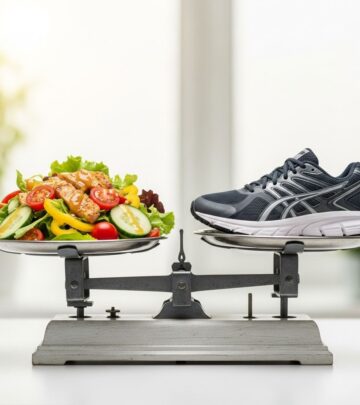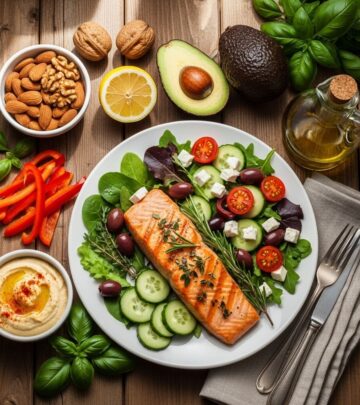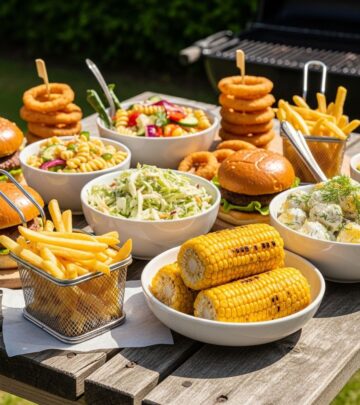5 Surprising Signs You’re Eating Too Much Sodium
Learn the unexpected ways excess sodium affects your body and how to recognize the subtle warning signs you're getting too much salt.

Salt is essential for flavor and bodily functions—after all, sodium helps maintain fluid balance, nerve transmission, and muscle function. However, in our modern diets, it’s easy to have too much of a good thing. Processed foods, restaurant meals, and even seemingly healthy snacks can send our sodium intake soaring well above recommended limits. While everyone knows that too much sodium can raise blood pressure, its overconsumption can trigger a variety of subtle and unexpected symptoms. Could you be overlooking the weird signs your body is sending you?
Read on to discover five surprising symptoms that may indicate you’re eating too much sodium, plus get actionable tips on how to cut back for better health.
Understanding Sodium and Its Role in Health
Sodium is a mineral found naturally in many foods and added to others as salt (sodium chloride). It’s vital for maintaining the right balance of fluids, transmitting nerve impulses, and supporting muscle contractions. The Dietary Guidelines for Americans recommend limiting sodium intake to less than 2,300 mg per day—roughly one teaspoon of salt. However, the average American consumes far more, often without realizing it.
- Main sodium sources: Restaurant meals, processed snacks, canned soups, breads, frozen foods, and condiments like soy sauce or ketchup.
- Why excess is bad: Chronic high sodium intake is linked to hypertension, heart disease, stroke, kidney damage, and more.
But what about the less obvious symptoms? Let’s look at five weird signs you’re likely getting too much sodium and what you can do about it.
1. Persistent Thirst
One of the earliest and oddest signs of excessive sodium intake is unquenchable thirst. Your body regulates fluid and electrolyte levels to maintain balance. When you consume salty foods, sodium accumulates in your bloodstream, pulling water out of your cells to dilute the salt. This triggers your thirst mechanism, nudging you to drink more fluids to help restore equilibrium.
Why it happens:
- Salt increases the salt concentration in your blood.
- Your body signals to drink more water to balance salt levels.
- If your mouth is always dry, or you feel you need more water than usual, sodium could be to blame.
Tip: Monitor your thirst, and consider whether your recent meals included lots of takeout, packaged snacks, or salty condiments.
2. Frequent Urination
Another not-so-obvious effect of sodium overload is the need to pee more often. As you drink more water to quench sodium-driven thirst, your kidneys work harder to filter out the excess sodium—often resulting in more trips to the bathroom.
The science:
- The kidneys balance sodium by excreting it in urine, taking water along for the ride.
- Frequent urination can signal your body is flushing out surplus salt.
- This may be more noticeable at night if you had a salty dinner.
Note: While frequent urination can result from numerous conditions, such as diabetes or a urinary tract infection, reflect on your recent sodium intake as a possible contributor.
3. Puffiness and Swelling (Edema)
Have you ever noticed your rings fitting tighter, your ankles swelling, or waking up with a puffy face? These can be signs your body is holding onto extra fluid—a process called edema—often triggered by too much sodium.
What’s happening:
- Sodium causes your body to retain water, leading to visible swelling, especially in the hands, feet, and face.
- This is most noticeable the morning after a salty meal.
- Edema tends to develop in people sensitive to sodium, including those with high blood pressure or kidney issues.
Real-life example: After a night of pizza and cured meat, you might wake up with swollen eyelids or feeling “puffy” all over.
If you regularly see swelling without another medical cause, take a closer look at your salt consumption.
4. Food Tastes Bland or Less Flavorful
Too much sodium can actually dull your sense of taste over time. When you habitually eat very salty foods, your taste buds adapt, making naturally low-salt foods, such as fruits and vegetables, seem bland or even tasteless.
How salty habits change your palate:
- Repeated exposure to high-sodium foods sets a new “normal” for flavor intensity in your brain.
- You crave more salt to get the same flavor punch.
- Conversely, reducing sodium can initially make food taste flat, but your palate will readjust within a few weeks.
Did you know? A study published in the “Journal of the American Medical Association” showed that people’s taste preferences for sodium decrease after consistently eating a lower-salt diet for just a few weeks.
5. Persistent Headaches
While many factors can contribute to headaches, high sodium intake may be a surprising trigger. Excess salt increases blood volume and pressures blood vessels, which can lead to tension headaches or migraines, especially in those predisposed to them.
Evidence:
- Medical studies have linked salt intake with increased frequency and severity of headaches in some individuals.
- This is particularly true if you’re also dehydrated, as dehydration can compound the effect.
Tip: If you’re prone to headaches, keep a food journal and make note of your sodium-rich meals. Reducing intake may help lower headache frequency.
How Much Sodium Is Too Much?
| Group | Recommended Limit (mg/day) |
|---|---|
| General adult population | 2,300 |
| Those with hypertension, kidney, or heart disease | 1,500 |
| Average American intake | 3,400+ |
Note: Even “low-sodium” or “heart-healthy” processed foods can contribute to an excessive total daily sodium intake. Checking labels is important!
Hidden Sources of Sodium in Everyday Foods
Think avoiding table salt is enough? Think again. Most sodium sneaks into our diet from packaged and restaurant foods—not just from what we add at the table. Here are some surprising culprits:
- Bread and rolls: Even without a salty taste, breads are a leading source due to frequent consumption.
- Cold cuts and cured meats: Ham, bacon, deli turkey, and sausages can be loaded with sodium preservatives.
- Canned soups and broths: One serving may contain up to half your daily limit.
- Cheese: Many varieties, especially processed ones, are high in sodium.
- Condiments and sauces: Soy sauce, ketchup, salad dressing, and BBQ sauce all pack a salty punch.
Tips for Cutting Back on Sodium
- Read nutrition labels and aim for products with less than 140mg of sodium per serving.
- Cook more meals at home using fresh ingredients and minimal added salt.
- Flavor food with herbs, spices, lemon juice, or vinegar instead of salt.
- Rinse canned beans and vegetables to remove excess sodium.
- Ask for sauces and dressings on the side when eating out, and request less added salt.
- Gradually reduce your use of salt to help your taste buds adjust.
What If You Already Have High Blood Pressure?
A high-sodium diet is a major contributor to high blood pressure (hypertension), which increases the risk of heart disease, stroke, and kidney damage. If you have high blood pressure, proactively reducing sodium is essential. The DASH (Dietary Approaches to Stop Hypertension) eating plan emphasizes fresh fruits, vegetables, low-fat dairy, whole grains, and minimal sodium for optimal heart health.
- Monitor your blood pressure regularly.
- Be cautious with high-sodium restaurant meals and processed snacks.
- Consult a registered dietitian or your healthcare provider for personalized advice.
When to See a Doctor
If you notice persistent swelling, severe headaches, or other symptoms listed here despite reducing sodium, speak to your healthcare professional. These could be signs of an underlying condition requiring medical attention. Likewise, sudden changes in urination, persistent thirst, or dramatic swelling are important to discuss with your doctor as well.
Frequently Asked Questions (FAQs)
Q: How quickly can sodium affect your body?
A: After a high-sodium meal, you may notice thirst and increased urination within hours. Puffiness or swelling often appears the next morning. Long-term excess, however, damages blood vessels over years.
Q: Are sea salt or Himalayan salt lower in sodium?
A: No—by weight, table salt, sea salt, and Himalayan salt have similar sodium content. The main difference is trace minerals and flavor; moderation is key for all types.
Q: Can drinking more water flush out extra sodium?
A: Increasing water intake helps your kidneys remove excess sodium, but it can’t compensate for consistently eating too much salt. Reducing intake remains crucial.
Q: How fast will my taste buds adjust to less salt?
A: Research shows your taste preferences can reset in 1–3 weeks. Foods might taste bland at first, but stick with it—soon, natural flavors will stand out more.
Conclusion: Listen to Your Body’s Sodium Signals
Your body is good at signaling when something’s off—even if the causes aren’t immediately obvious. If you’re experiencing persistent thirst, frequent urination, puffiness, dulled taste, or headaches, take a look at your sodium intake. By being mindful of hidden salt in processed foods and making simple changes to your habits, you can reduce your risk for long-term complications and feel your best—one mindful bite at a time.
Read full bio of medha deb












